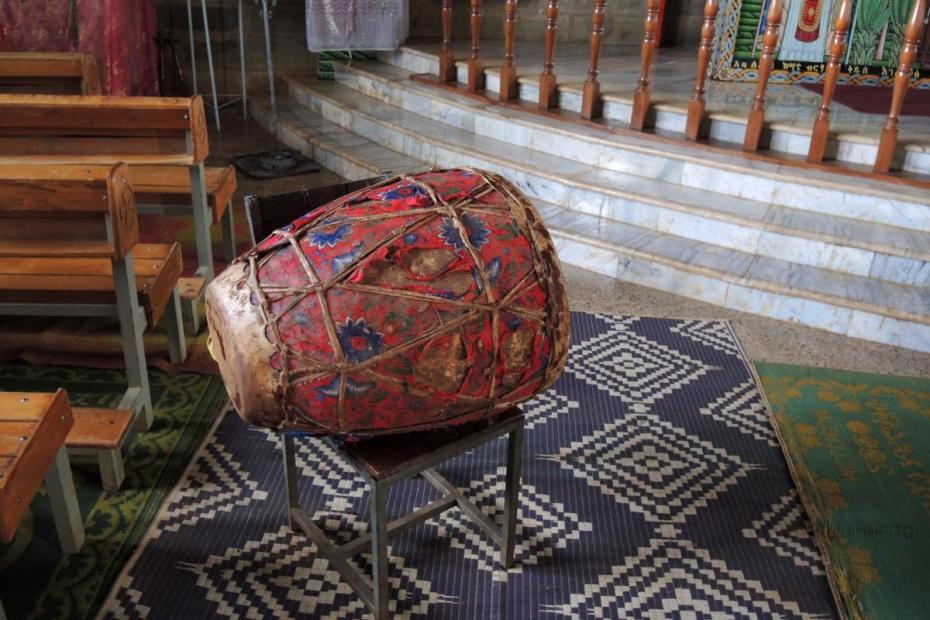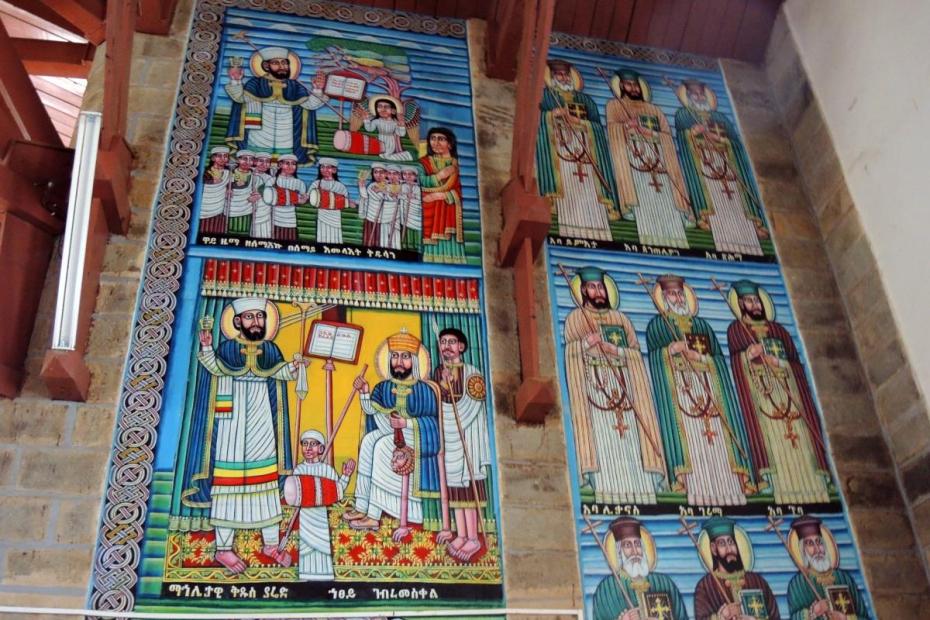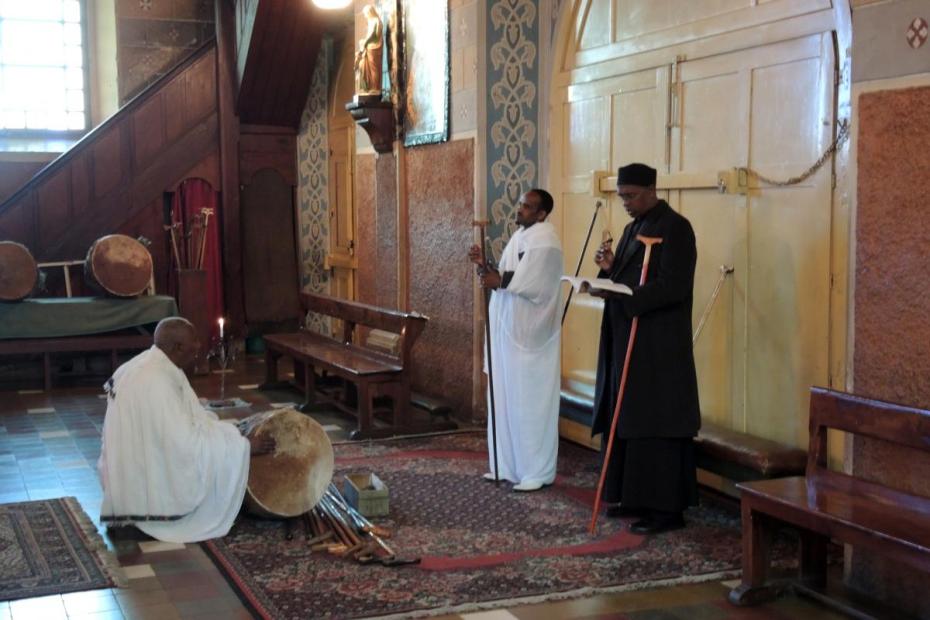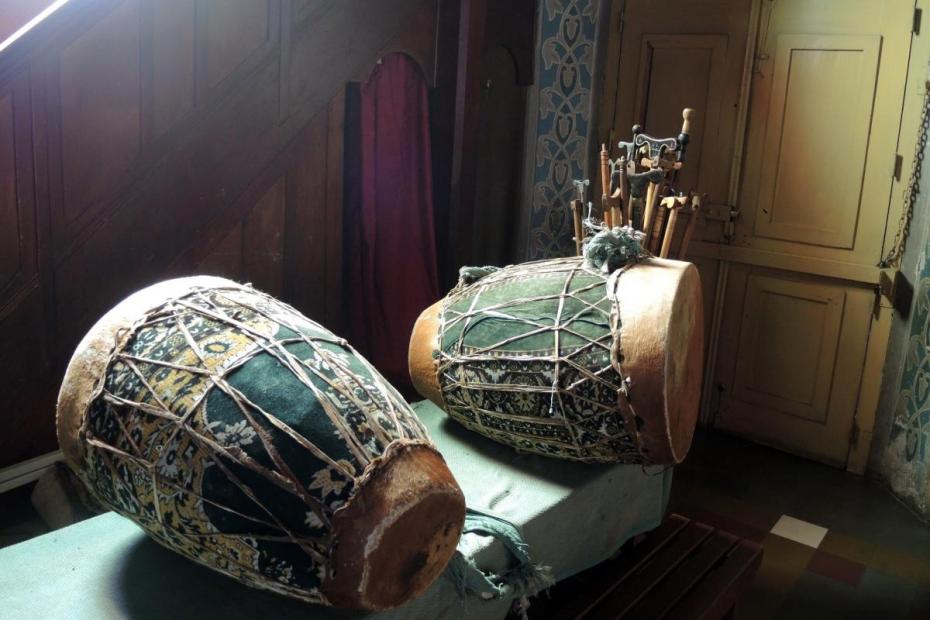The primary form of liturgical music in Ethiopia, both in Orthodox and Catholic churches, is a form of chant known as zema. The form dates to the sixth century. Chant is integral to the liturgy and to the Liturgy of the Hours.
The video of the Meskel liturgy on this page begins with a clip of priests and deacons chanting the Liturgy of the Hours before Mass. The music there is slower and almost dirge-like, but on other occasions, the same drums and bronze sistrum may be used for more lively and celebratory events. "Ethiopian chant possesses a distinctive modal system, and with the exception of improvisation during qene performance, stresses continuity over time rather than innovation... Ethiopian Christian chant is transmitted by oral tradition as well as by a notational system... which constitutes the only indigenous of musical notation in Africa."1
In Addis there was a somewhat active debate about how much newer music to include in the liturgy. Many interviewees felt that the chant was too slow and passive to keep the attention of urban youth today, and that accommodation to Western music ought to be made to keep youth from going over to Pentecostal churches. At the liturgy on Meskel at the Catholic Cathedral, a choir of young people performed more contemporary music using a synthesizer.
- 1Kay Kaufman Shelemay, "Music" in Encyclopaedia Aethiopica, vol 3., edited by Siegbert Uhlig, Wiesbaden: Harrassowitz Verlag, 2007. p. 1083.




